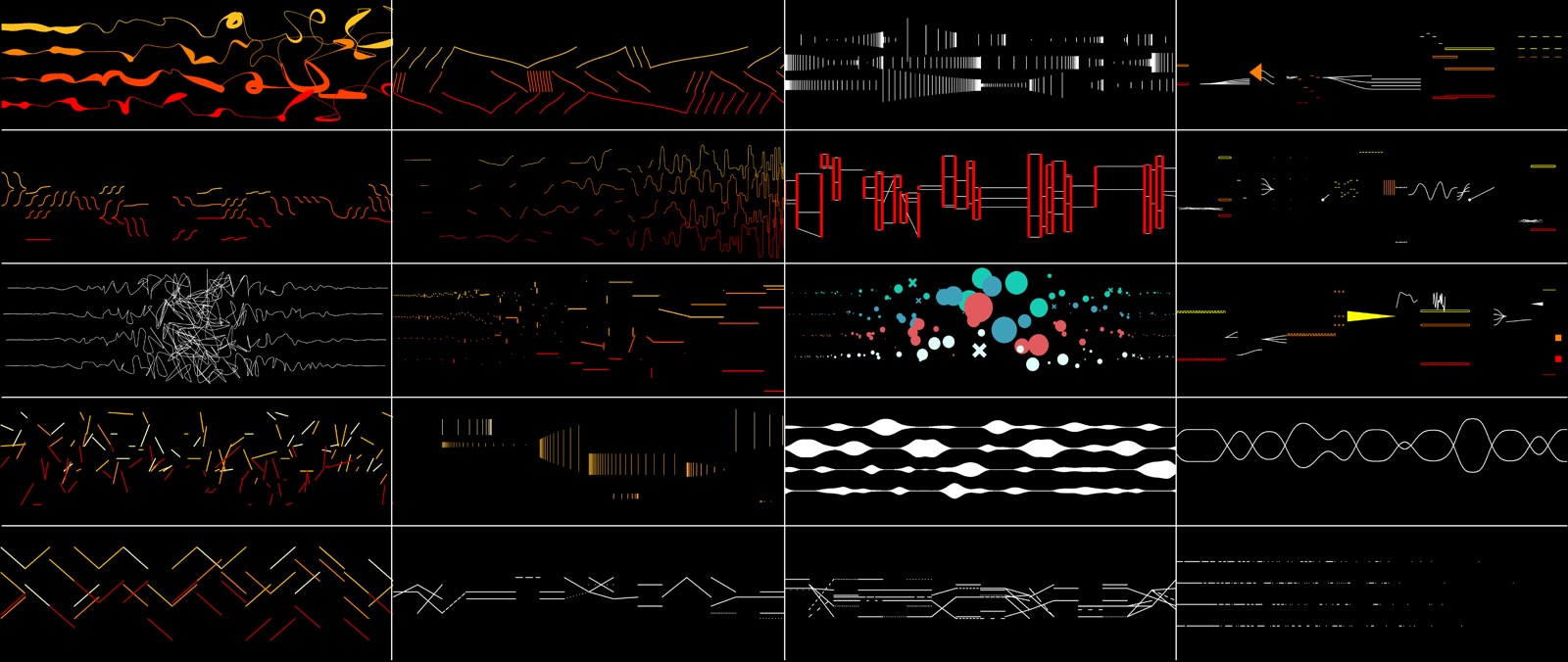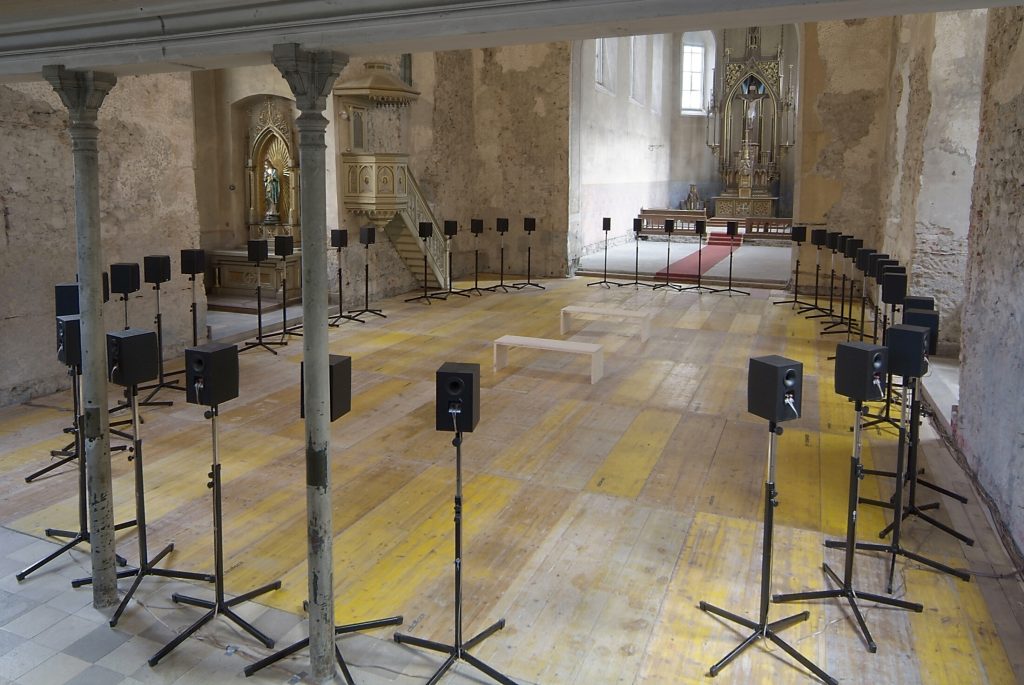The project that grabbed my attention immediately was FORMS–String quartet created by Playmodes. One of the reasons is because I come from a strings background, but as I skimmed through the articles the simple and geometric design really matched my eye, which seemed to be designed similarly with the aesthetic I have been exploring a lot recently.

I think it’s fascinating that the performance is both visual and sonic, and that the performer’s playing of the instrument is converted to a visual pattern in real time. The visuals also reminded me of the mobile instrument games I used to play, so it was even more entertaining. This program seem to use size, shape, and color as a variable to express the different instruments rhythm and dynamic, which I assume is taken into programming as the decibels and pitch is measured from the recording of the performance. I think the choice of using simple geometric shapes and gradient colors show the artist’s attempt to combine modern design aesthetics and classical music to invite a wider variety of audiences to this source of entertainment.
![[OLD SEMESTER] 15-104 • Introduction to Computing for Creative Practice](../../../../wp-content/uploads/2023/09/stop-banner.png)
